Parsnip Mash with Cream and Spiced Butter
A flavorsome approach to one of the Kingdoms’ great staple vegetables
- Background
- Recipe
For people inhabiting a culture in which artificial refrigeration of vegetables and other foods—while available via sorcerers and Fireworkers—is rarely terribly convenient, the parsnip’s impressive keeping qualities (especially when clamped) and its relatively long growing season are obviously going to make it popular as a side dish… or in some recipes, a main dish.
The parsnip also provides a versatile and interesting backdrop for pairings with other vegetables and spices—its own intrinsic spiciness and warmth providing a pleasant foil for more assertive flavors. No other staple vegetable in the Four Realms’ food culture proffers so adaptable a welcome. (And perhaps none in ours. By comparison to the parsnip, the potato, in its initial state, is fairly bland. But Solanum tuberosum does not occur in the Middle Kingdoms, for reasons detailed here.)
This recipe’s approach to the parsnip is a favorite one in those parts of the Kingdoms where some spices are available enough, but not so much so as to encourage a rural kitchener to fling them around with too much abandon. Making a spice or flavoring go further by steeping it in butter or oil, and then adding it to a background food as a drizzle or accent is a popular tactic.
This dish, which uses clarified butter and cream (or sour cream) and locally-grown chiles, turns up frequently in such dairy-raising areas as central Darthen. Further south and east in the Kingdoms, in regions where spices may only be shipped seasonally (the seasonality being on the shippers’ side: some don’t care to deal with the vagaries of southern weather as winter draws in), local treatments tend to rely on the quality of local produce—like the butter in which the chilies are fried— to elevate the dish into something more than a mere belly-filler.
See the Recipe tab for details.
.
The ingredients:
- 1 kg / 2.2 pounds of fresh parsnips
- 2 or 3 cayenne or similarly sharp/hot chiles
- 3 or 4 milder chilies or peppers/capsicums (Jalapenos, or small sweet peppers)
- 250g of butter, clarified
- 250ml of cream OR 250 ml of sour cream
- Fresh ground allspice (if liked / if possible)
- Salt and white pepper to taste)
First, let’s deal with the parsnips.
Parsnips are a wetter vegetable than most other members of the root vegetable clan; so to cook them, steaming generally works better than boiling. (They tend to get waterlogged when boiled.)
So while we’re preparing the parsnips, set up a steamer with just enough water to nearly touch the bottom of the steaming basket. Start the heat under it and get it boiling.
Meanwhile, top and tail the parsnips (i.e., cut off both ends on each).
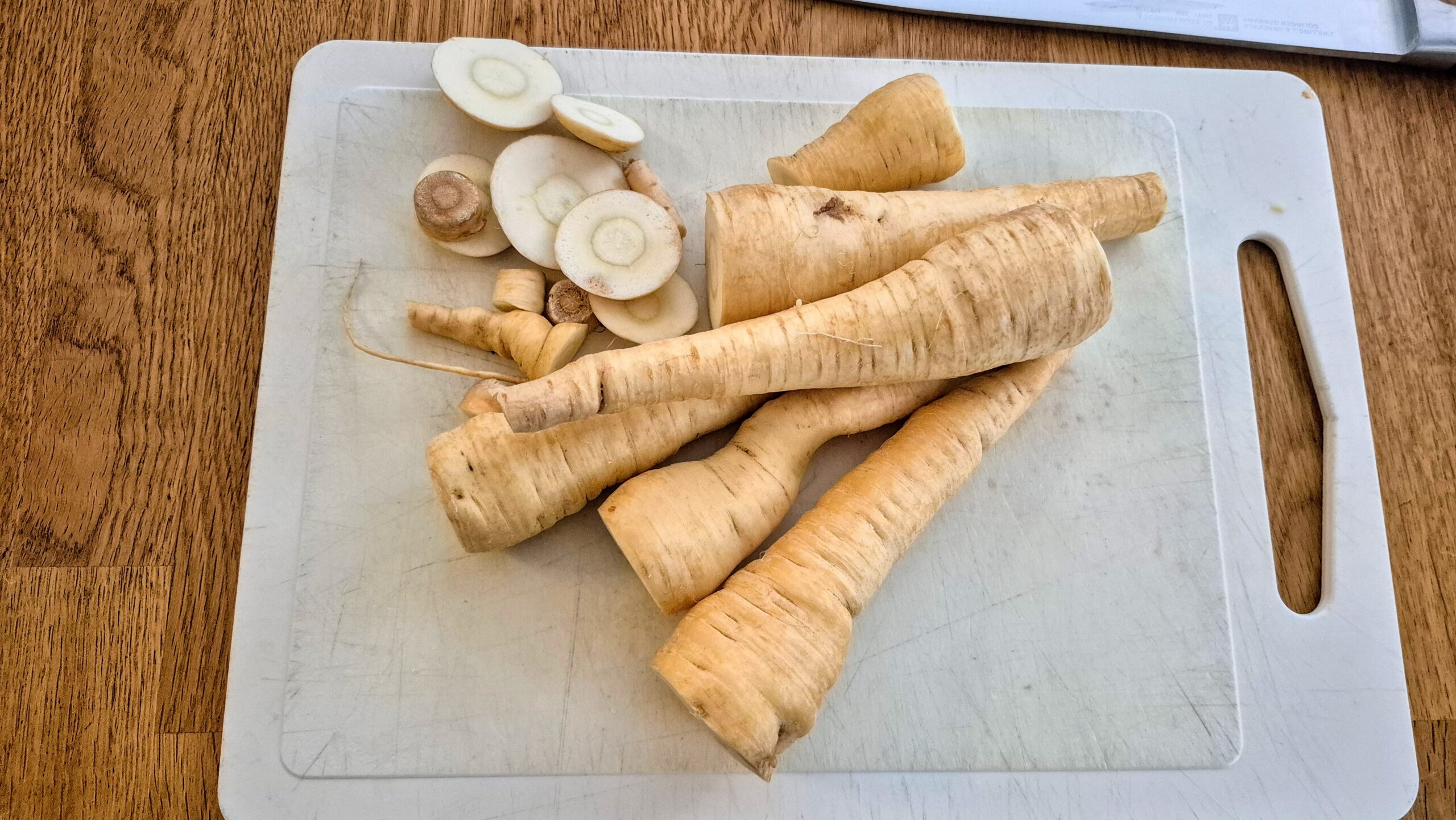
Peel the parsnips with a potato peeler…
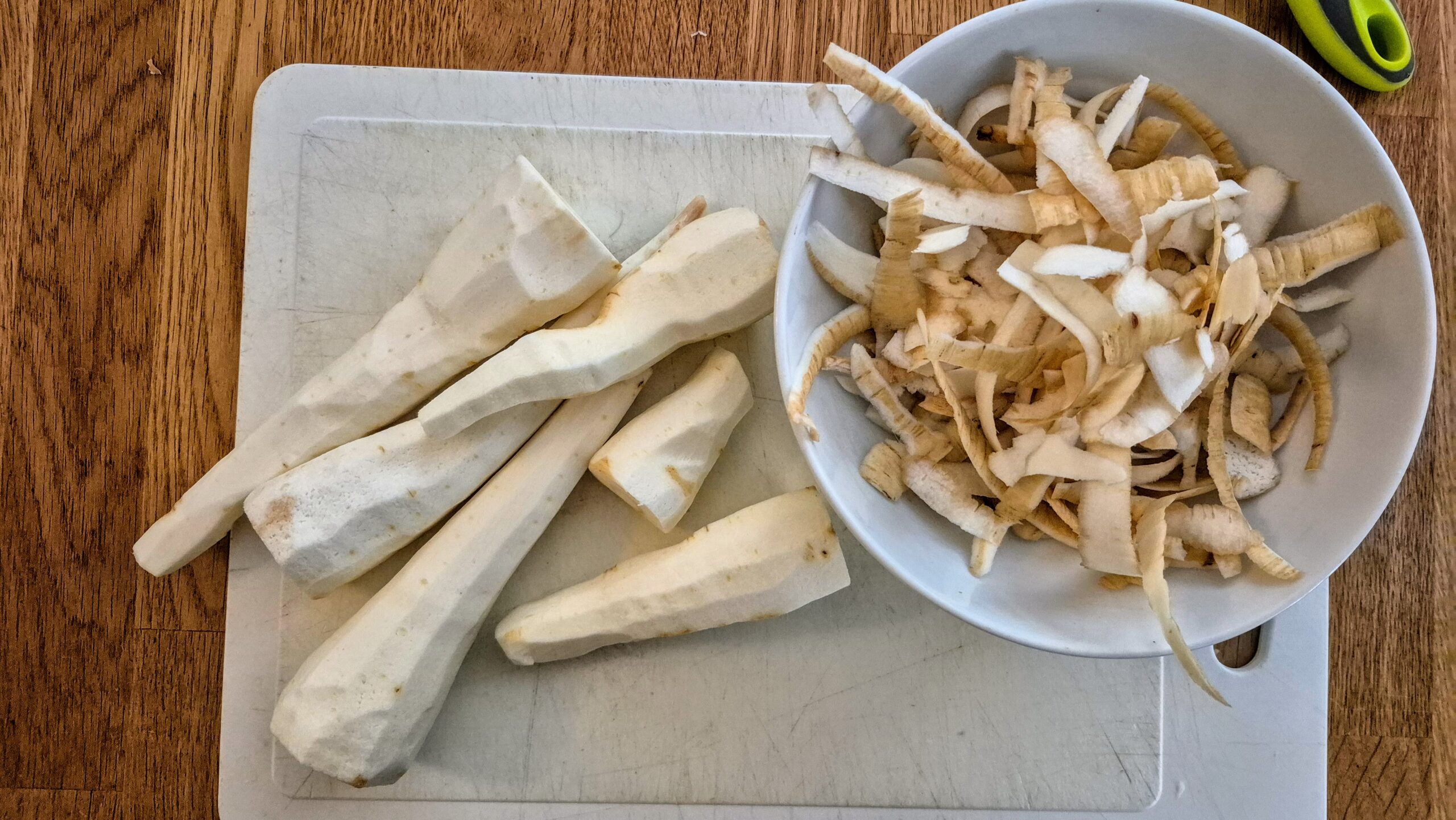
and then cut them into more or less equal-sized chunks. (The idea being that when you steam them, they’ll all cook at pretty much the same speed.)
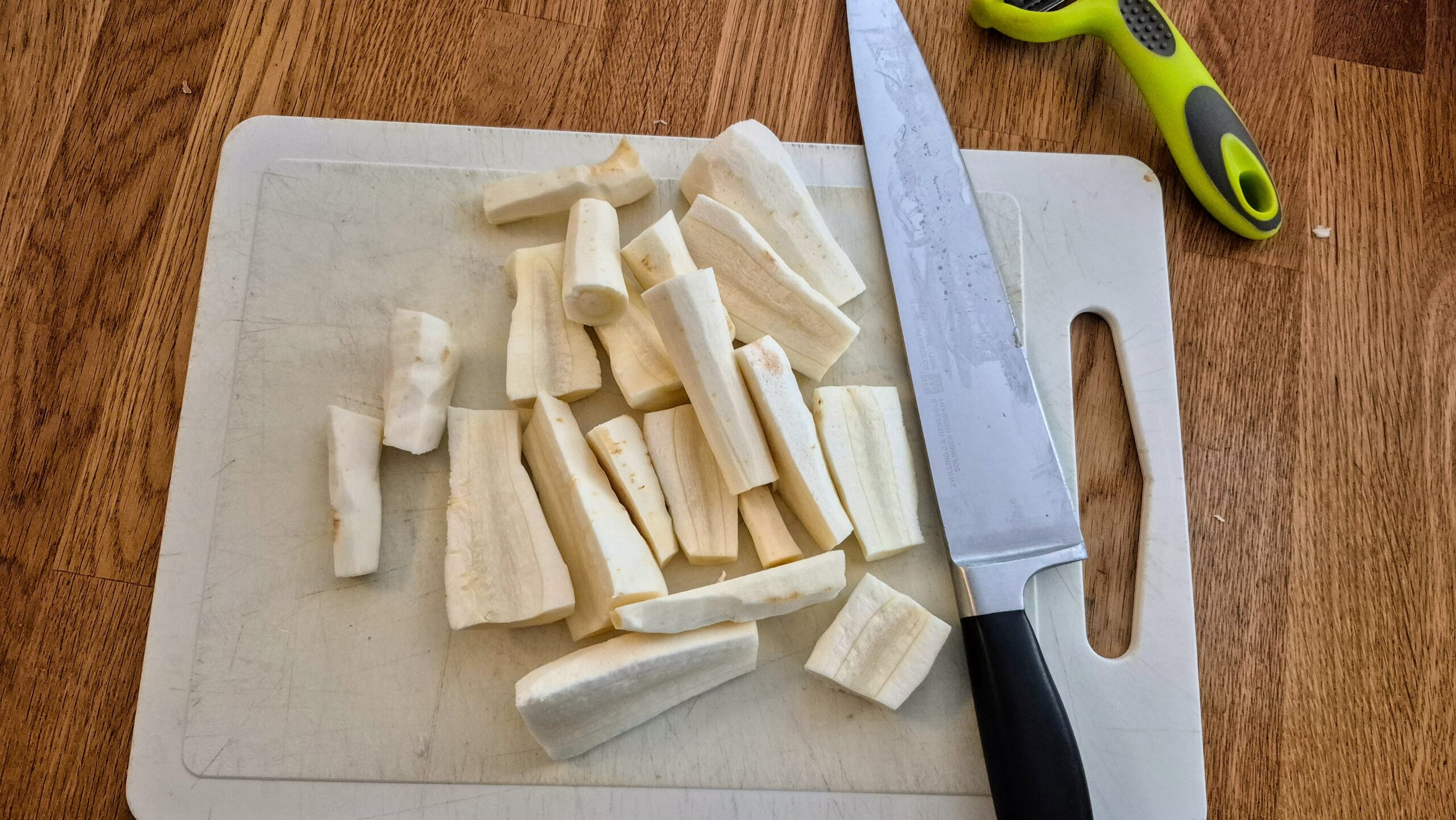
Drop them into the steamer and steam for 25-30 minutes or until extremely tender.
Once they’re cooked: since even at their tenderest parsnips can produce a very thick mash—and may be a bit fibrous, if you’ve kept them for a while (or someone else has)—the best approach may be to use a manual potato masher on them and then push the results through a sieve. (Or, for cooks not located in the Middle Kingdoms who have access to different tech, use a stick mixer on them, or put them in a blender or food processor. If the latter, pulse it gently to get them down to “mash” status.) Add a little cream at first, if you need to, to make the job easier.
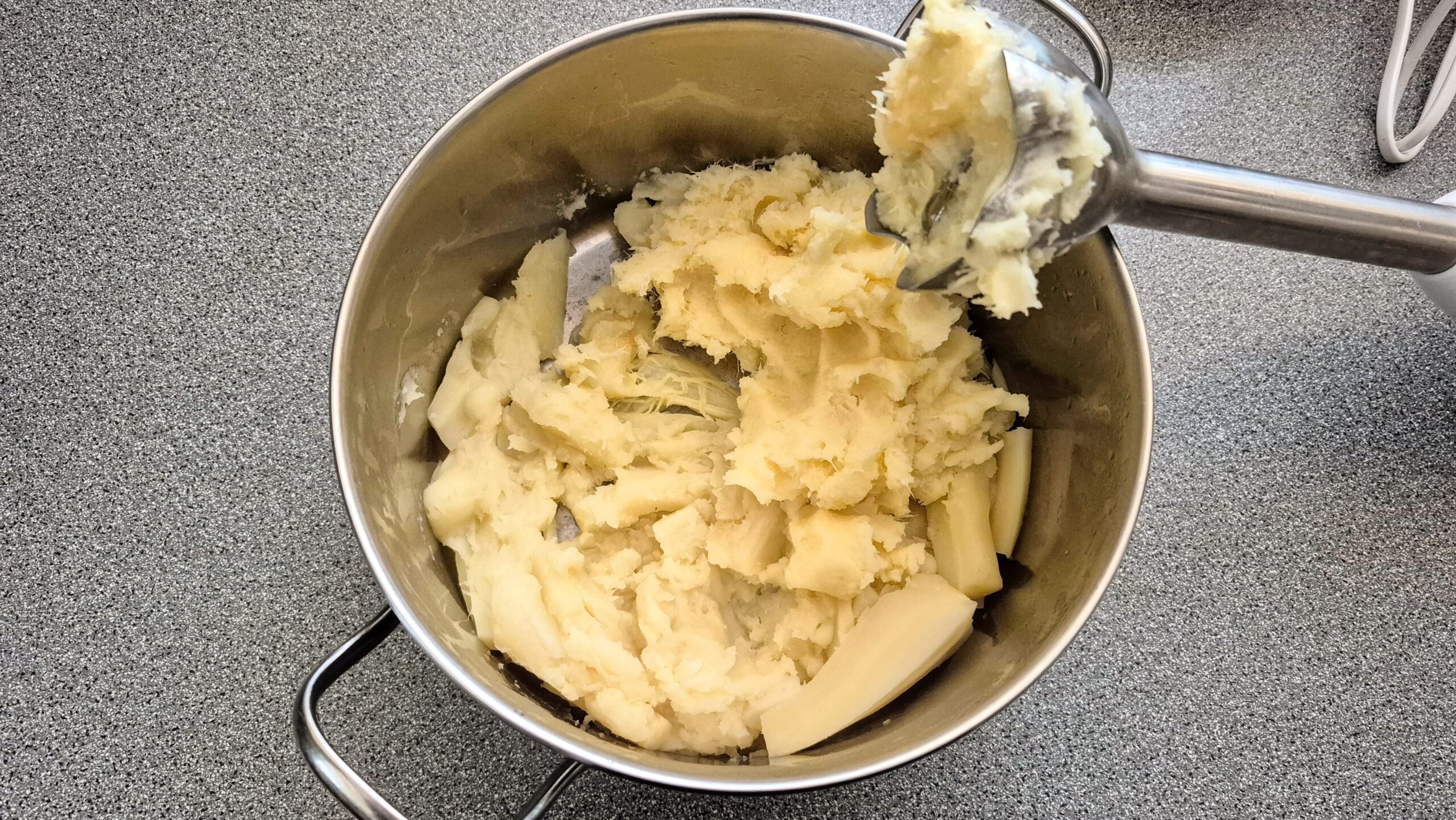
Then slowly add the rest of the cream and keep beating it in until you have a thick, smooth mash. You’re looking for a result that’s very like thick but well-whipped mashed potatoes. When you reach this point, scoop the parsnips into a bowl and set them aside.
Now it’s time to deal with the chilies. Having clarified your butter (or melted down some store-bought clarified butter), bring it slowly up to near-frying heat in the smallest pot you’ve got.
While that’s happening, slice the chilies. You should try to slice the sharper/hotter chilies into thinner slices if you can, as this helps them give up their heat more quickly.
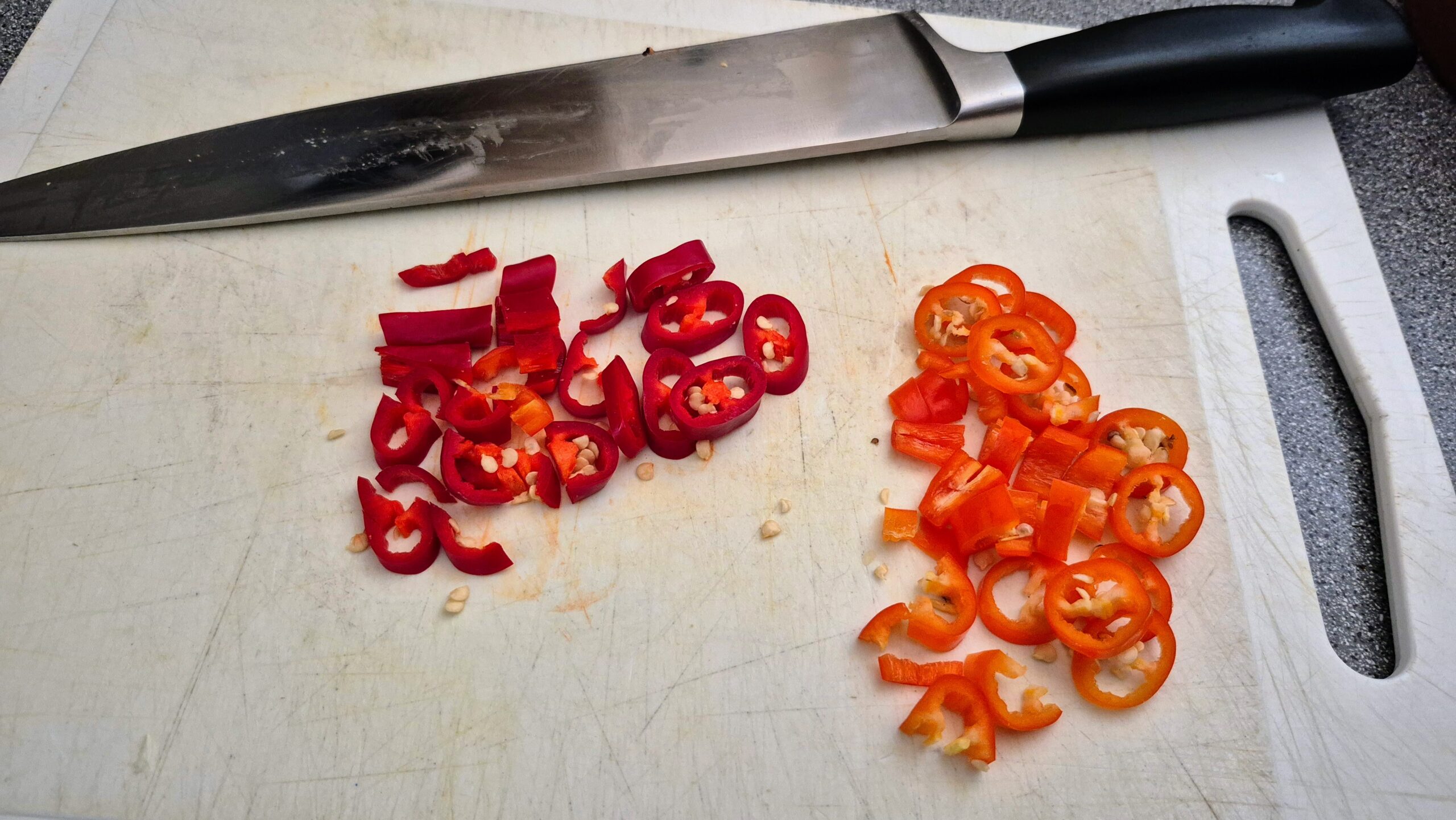
Then, to check the temperature of the clarified butter, introduce a slice of chile to its pot. To start with, you should look for the slice to just start bubbling very gently around the edges as it begins to fry. When you’ve achieved that result, add the rest of the chilies and stir them gently as they start frying.
If (as above) they start producing foam as the process begins, remove that with a spoon (as it’ll scorch if you’ve left it there when the temperature rises).
Once the foam is cleared away, let the frying continue gently for a few minutes. You don’t want these to brown much (if at all), but the frying will draw the chilies’ heat into the butter with surprising speed. Don’t expect the butter to change color very much. If that starts happening, it’s a sign the chilies may start burning shortly, which you really don’t want.
When they’re done enough to be just a little bit crisp, remove the pot from the heat, let everything calm down a bit, and then use a slotted spoon or similar utensil to get the chilies out of there and onto a paper towel to drain.
Meanwhile, once the clarified butter you’ve fried them in has also settled down, set it aside in a heatproof jug and get ready to assemble your serving dish (or individual servings).
Warm up your pureed parsnips (if they’ve cooled off at all significantly) and check their flavor. They’ll probably need a little salt. You might like to stir a little white pepper as well, for some subdued background heat.
Assuming that you’re preparing the parsnips in a serving dish (though the technique’s the same on a plate): Make some swirly patterns in the parsnip puree with a fork, or the back of a spoon. This helps keep the butter from just vanishing down the sides.
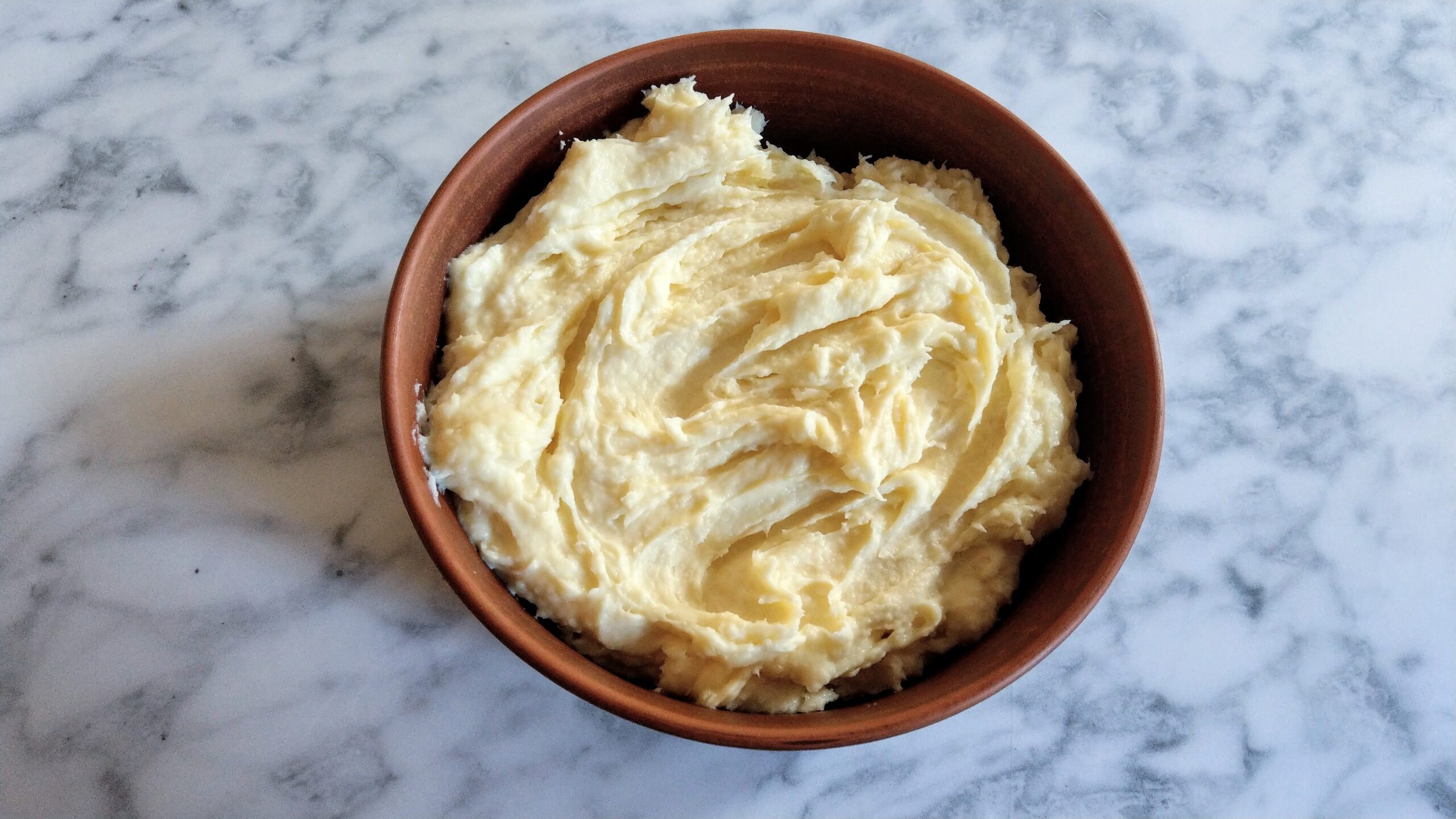
(In northern parts of Darthen and Arlen, near the primary regions where the Middle Kingdoms’ variant of Pimenta dioica grows wild and is readily available, many people would add some coarse-ground allspice at this point.)
After this, drizzle some of the spiced clarified butter over the top of the puree. It’s routine for additional butter to be served on the side in a jug or cruet, for those who want more heat.
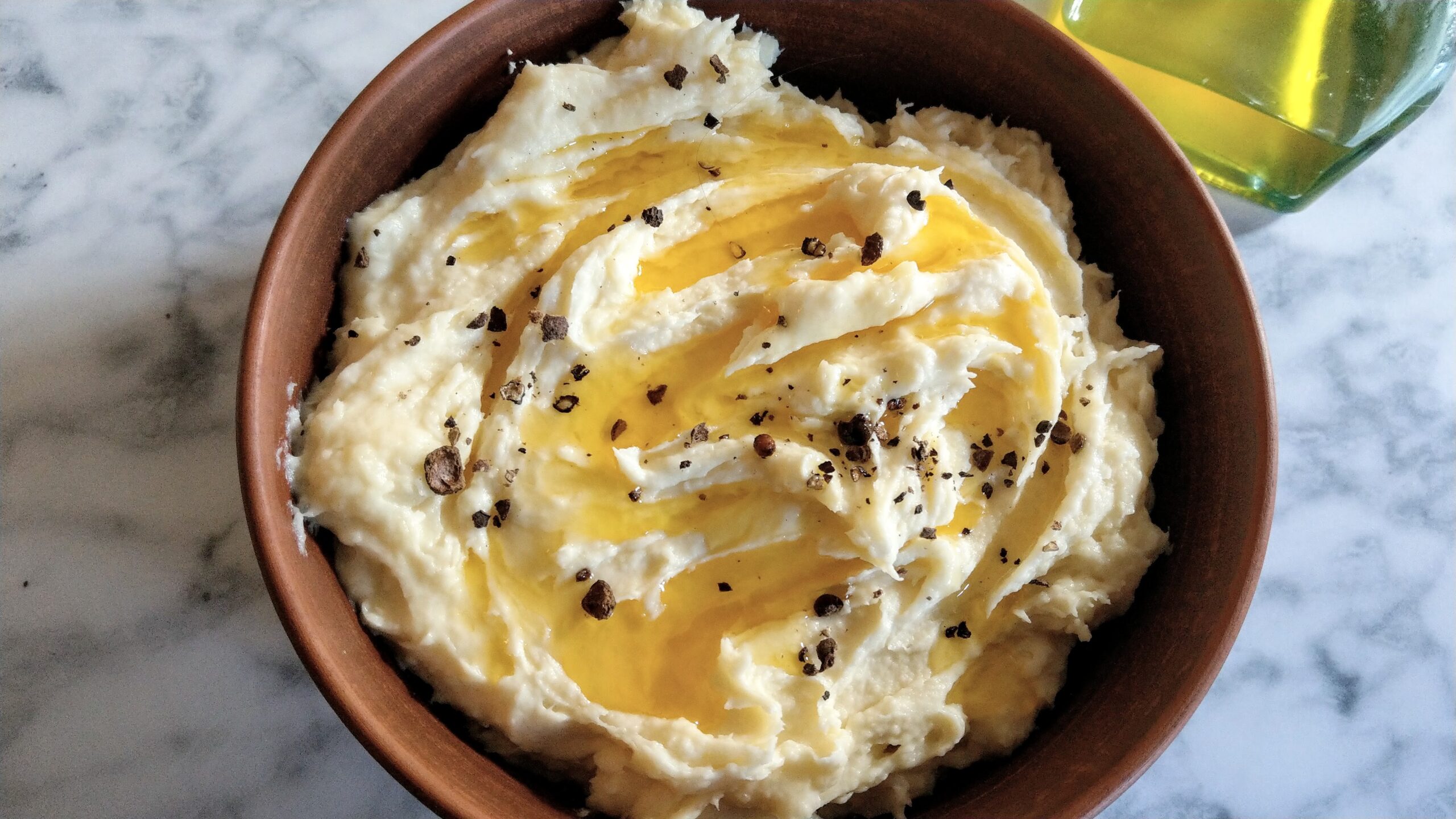
And finally, scatter the chilies over the top. If there are some extra ones, they too might be served on the side, again for the delectation of those in search of a little more gustatory excitement.
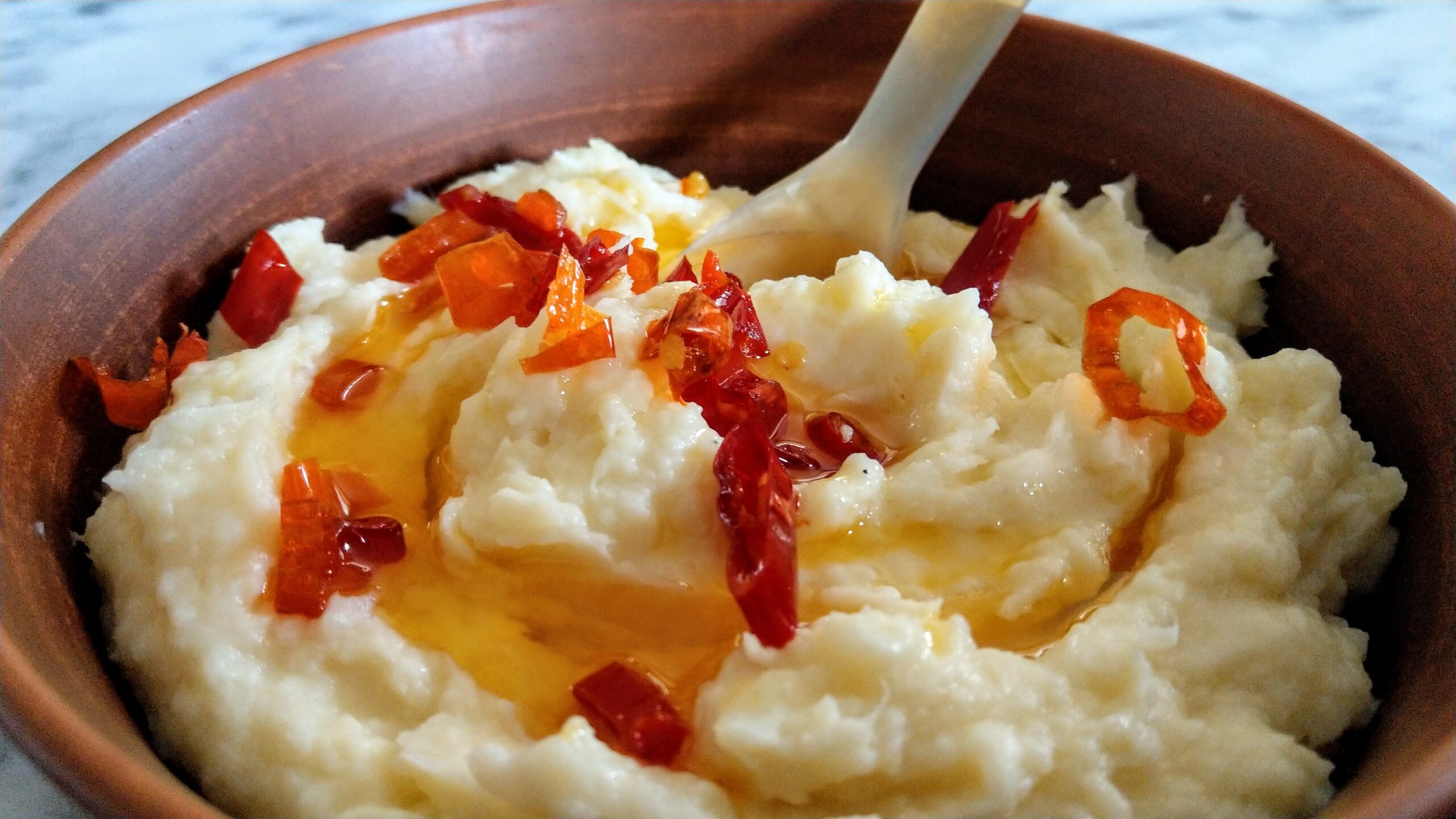
Meanwhile: may you do as they do, and enjoy!
Fruit, pastry, sweets, desserts, pies
SuperValu, Polonez, Moldova



